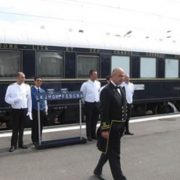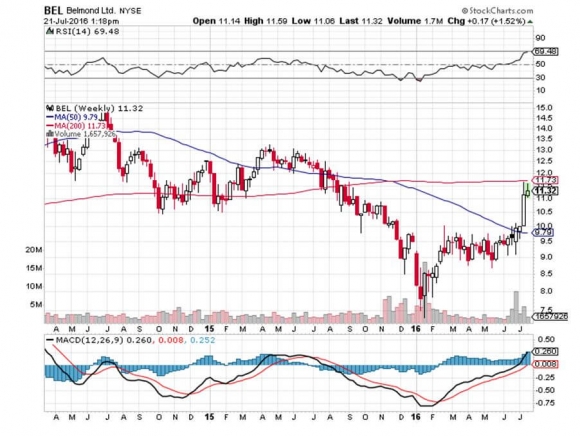I was awoken from a dead sleep in the middle of the night in my suite on the Orient Express by a juddering halt and the smell of burning brakes in the air.
We were somewhere high in the Swiss Alps, and every single passenger on the first class only train had to be thinking that a murder had just been discovered.
It turned out that in the darkness we had hit a 400-pound wild boar astride the tracks. We spent four hours on a remote siding waiting for Swiss National Rail to deliver us a new engine.
I elicited chuckles when I ordered boar for lunch the next day. The ma?tre d? assured me it wasn?t ready yet, as the meat had to soak in vinegar for 48 hours before cooking.
That's the kind of thing you only hear in Europe.
I boarded the train that morning at London?s Victoria station in anticipation of the trip of a lifetime.
Venice Simplon Orient Express didn?t disappoint, although I would not be surprised if the IRS questioned the $8,500 cost for the 34-hour trip as a business expense on my tax return this year.
The legendary train has been featured in a dozen films (James Bond and Agatha Christie), two dozen television shows, and played a major part in countless novels. You can even buy the video game.
The modern Orient Express is in fact three different trains.
From Victoria Station in London to Folkestone on the coast, I traveled on a vintage British train that was definitely showing its age.
Then I boarded a bus, which drove on to a flatbed rail car that whisked us through the tunnel under the English Channel.
There, we claustrophobes closed our eyes and held our breath for 20 minutes, which at the nadir my altimeter watch showed us at 1,500 feet below sea level.
The real luxury started when I boarded a vintage 1924 Pullman first class sleeping car in Calais, France, lovingly restored to the day it was built.
I set my watch ahead one hour and back 92 years. Suddenly, the trees resembled those in impressionist paintings, the land was dotted with Norman fortresses, and gasoline was $8 a gallon.
The original Orient Express, from Paris to Istanbul, made its inaugural journey in 1882, and quickly became famous for its unheard of luxury and speed. Modern bullet trains and cut-rate airlines put it out of business 100 years later.
The current incarnation started in 1977 when James Sherwood, who had built up a fortune through Sea-Land Containers, bought three dilapidated Pullman rail cars at an auction in Monte Carlo.
Like all of us with insanely expensive hobbies, he sought a way for outsiders to fund his passion.
Hence, the Venice-Simplon Orient Express started luring big spenders and the romantically inclined in 1982 (click here for their site http://www.orient-express.com/web/vsoe/venice_simplon_orient_express.jsp).
I became one of the original passengers in England when my broker chartered it for a day of client entertainment, an ancient steam engine laboring all the way.
Over the next 30 years, Sherwood built Orient Express into one of the world?s preeminent luxury brands, on par with Cartier, Tiffany, and Chanel.
He developed a massive global network of cross marketing deals that tied in package tours, hotels, cruises, and other vintage trains.
Today, the parent company, Orient Express Hotels (OEH) carries a market cap of $1.15 billion (click here for that site http://www.orient-express.com/).
Ironically, the company today still only owns one of it's dozens of rail cars. The rest have been sold to Middle Eastern investors with long-term leaseback contracts.
The dinner onboard is the highlight of the trip, a fabulous six course, three hour affair. There you meet the other passengers, all dressed to the nines.
Most were wealthy elderly couples knocking off a bucket list item, along with a few young hedge fund managers and a passel of mistresses.
I was one of the few Americans. I ate with a casino operator in Ireland and the owner of a manufacturing company in the UK. All I can say is thank goodness for the elastic waist on my tux trousers.
Having spent a lifetime analyzing corporate managements, I was fascinated by the operation of the train.
While the onboard staff is limited to 79, they are supported by a management, marketing, and engineering team of no less than 4,500.
You don?t just show up with a 17-car train in Europe?s incredibly congested rail network. You must first file a route plan and get a clearance slot, much like any airline.
Engines and crews must be changed at every border. Mechanics are onboard with an ample stockpile of 1920?s rail car parts.
Oblivious passengers are frequently left stranded behind at stations along the way and must be retrieved by taxis, which catch the train down the line.
To make up the time we lost due to the unlucky boar, the rail authorities routed us though the 12 mile long transalpine tunnel under Spl?gen Pass, then along the sublime shores of Lake Como, where the train rarely travels.
We roared past George Clooney?s house, who, I am told, is a frequent passenger on the train.
Amazed Italians were waving and taking pictures of us with their cell phones at every stop.
Suddenly the buildings were all shaded in pastels, the churches changed from Protestant to Catholic, and the trees resembled those in Renaissance religious paintings.
We raced over the causeway to Venice?s Marco Polo station that evening, dumping our considerable luggage into a private speedboat which whisked us away down a Grand Canal crowded with gondolas, en route to the fabled Cipriani Hotel.
To be continued.







